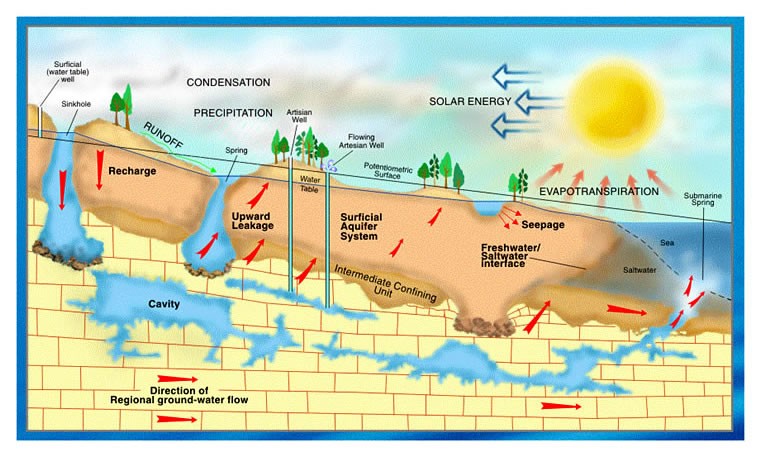Learn About Springs
How A Spring Works

Hydrologic cycle and geologic cross-section image courtesy of Florida Geological Survey Bulletin 31, updated 1984.
Springs Terminology
What is a spring?
A spring is a natural opening in the ground where groundwater emerges from the aquifer to the Earth’s surface. The groundwater is under pressure and flows upward through an opening, or a spring vent, contributing flow to a river or other waterbody.
What is a spring vent?
A spring vent is an opening that concentrates ground-water discharge to the Earth’s surface.
What is a groundwater contribution area?
A groundwater contribution area is an area that contributes groundwater to a spring’s discharge. The exact shape and size of the area can change with varying hydrologic conditions.
What is a spring group?
A spring group is a collection of individual springs that lie within a groundwater contribution area and usually discharge to a common spring run.
What is a first magnitude spring?
A spring’s magnitude is determined by the volume of flow per unit time. First magnitude springs are classified as the largest springs and discharge at least 64.6 million gallons of water per day or 100 cubic feet per second (cfs).

